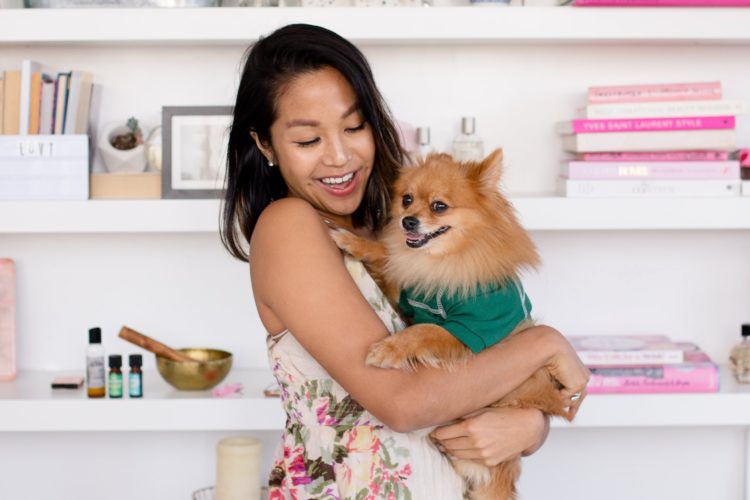Photo credit from angel1238812 on Pixabay.com
Are you thinking about getting a puppy, or adopting a new dog?
It’s so important to choose the right dog for your life. They can either become your best friend or your worst nightmare.
Sadly, 3.3 million dogs enter shelters every year and only 1.6 million are adopted. The rest either live out their days in shelters, or they are euthanized…
Even sound, healthy, adoptable pets have their life cut short because they were either surrendered or abandoned by their owners.
That’s why doing your research – learning all you can about dogs – before you adopt or purchase your new companion is the kindest and smartest thing to do.
Here are three tips to help you choose the right dog.
You will become your dog’s whole life when you bring them home. It’s a big responsibility to care for something that will be completely reliant on you for their health and well-being for their whole life.
Before you make the commitment, follow these three steps.
1. Read about the breeds.
It’s tempting – especially if you have children – to go to a pet store or a shelter on a Saturday afternoon and pick out the most adorable dog you see.
Beware! Impulse-buying rarely works out, for you or the dog.
Even if you’re adopting a shelter dog, make sure you know about the breed’s personality, its needs and quirks – and how they fit with yours.
For example, if your lifestyle is:
- Very active: Labrador Retrievers, Rottweilers, and Border Collies would make a great companion.
- Have small children: Saint Bernards and Labradors are famous for being family dogs, but did you know short-haired dogs like Boxers and Beagles are also very kid-friendly?
- Have allergies: Bichons, Poodles, Portuguese Water Dogs, and Schnauzers don’t shed and have less dander than most breeds, making it easier on your sinuses and house cleaning chores.
Be realistic about the time you’ll have to train your new furry friend… and whether or not you have the skills to do it yourself. Some breeds are more eager to please than others.
Border Collies, for example, are extremely receptive to training. However, since they’re working dogs the training needs to be intense and engaging both mentally and physically…
Very smart high energy working dogs can be a delight when focused properly, but when they’re bored they can be very challenging to have around.
It can be fun to read up on dog breeds – you might even discover a breed you’d never heard of or didn’t realize would be the perfect fit for you.
2. Write a job description for your dog.
That’s right. It might sound like a strange thing to do… but take the time to write down why you want a dog in your life and what you expect them to do for you.
Now that you know about various breeds, their strengths, and weaknesses, make a decision about what a day in the life of you and your dog will look like… and then pick the best match.
For example:
- I want my dog to curl up on the sofa with me while I read.
- I want my dog to learn loads of tricks to show off to my friends.
- I want my dog to keep me company on my trail runs or hikes.
- I want my dog to guard my house and my family.
- I want my dog to be a furry nanny to my child.
- I want my dog to go with me everywhere as a constant companion.
- I want my dog to be a therapy dog bringing comfort and love to me and others.
- I want my dog to…
There are countless “jobs” your dog can do for you…but you’ll be setting them and yourself up for failure if you’re not clear about your expectations.
If you don’t know what you want, then you won’t know how to choose the right breed for the job!
3. Interview your dog first.
That may sound just as strange as writing a job description, but it’s a step you really shouldn’t skip.
In order to choose the right dog, it’s so important to spend time with them before you take them home.
If you’re adopting a shelter dog, that will mean going for a few visits so you two can spend time together and interact – whether that means cuddling, playing fetch, or going for a brisk walk.
If you’re buying a puppy from a breeder you’ll know much more about the pedigree and personality of your future furbaby, but at least one meeting so you can share your energy together will be helpful.
An unplanned meeting with the breeder is also a great idea, so you can see more of the truth about the breeder and how they handle their dogs that they may not want you to know.
If you’re able, have a conversation with your pet to make sure you two will be a good fit. They have a great deal to say if you ask the right questions and know how to listen to their answers.
If you don’t know how to communicate with animals, then 1) learn how now because knowing how to talk with your dog makes all the difference in the world in how quickly you bond and understand each other, and will help you work through problems together too, and/or 2) hire a professional animal communicator to do it for you.
Who knows, maybe they don’t want the job…
Or, maybe they don’t feel a purpose with you.
If that’s the case, then they’re the wrong dog.
Be careful to choose the right dog: it’s a lifetime commitment for both of you.
A dog can bring endless joy into their human’s life. And their humans have to understand that once they’ve made that commitment, they will become their dog’s whole world.
Most dogs will live an average of ten years. Some large breeds have a shorter life, but there are small breeds that can reasonably be expected to be a treasured member of your family for 20+ years. Mixed breed dogs tend to live longer than purebreds, but it’s difficult for owners to predict…
Do your best to avoid getting swept up in the darling appeal of a cute furry face, a sweetly lolling tongue, and a curious wet nose at your local pet store.
Pet store animals are typically gotten through unscrupulous breeders and puppy mills out to make a buck. The dogs are often abused, kept in tiny cages, force bred, and are in ill health. They can be very malnourished.
Puppy mill dogs are often genetically flawed, and are untrained as well as unsocialized. If you get one of these dogs, then you encourage them to continue hurting more and more dogs. And you’ll be facing the daunting task of training to overcome many problems healthy, naturally raised puppies won’t have.
If you’re thinking about adding a dog to your family – whether that family is you and a cat or a loud household full of kids – do yourself, and your future dog, a kindness. Do your research. You’ll be glad you did!
If you’d like to help learning how to communicate with all the animals currently in your life – as well as the ones you’re thinking of bringing into your life – contact us.
.
Want to learn more about your fluffy companions? Read these articles below:
Adopting a Shelter Dog: 6 Ways to Bond
Pet Foods – Ranked From Great to Disastrous…
Cooking for Your Dog with Gayle Pruitt on The Real Dr. Doolittle Show™










Leave a Reply